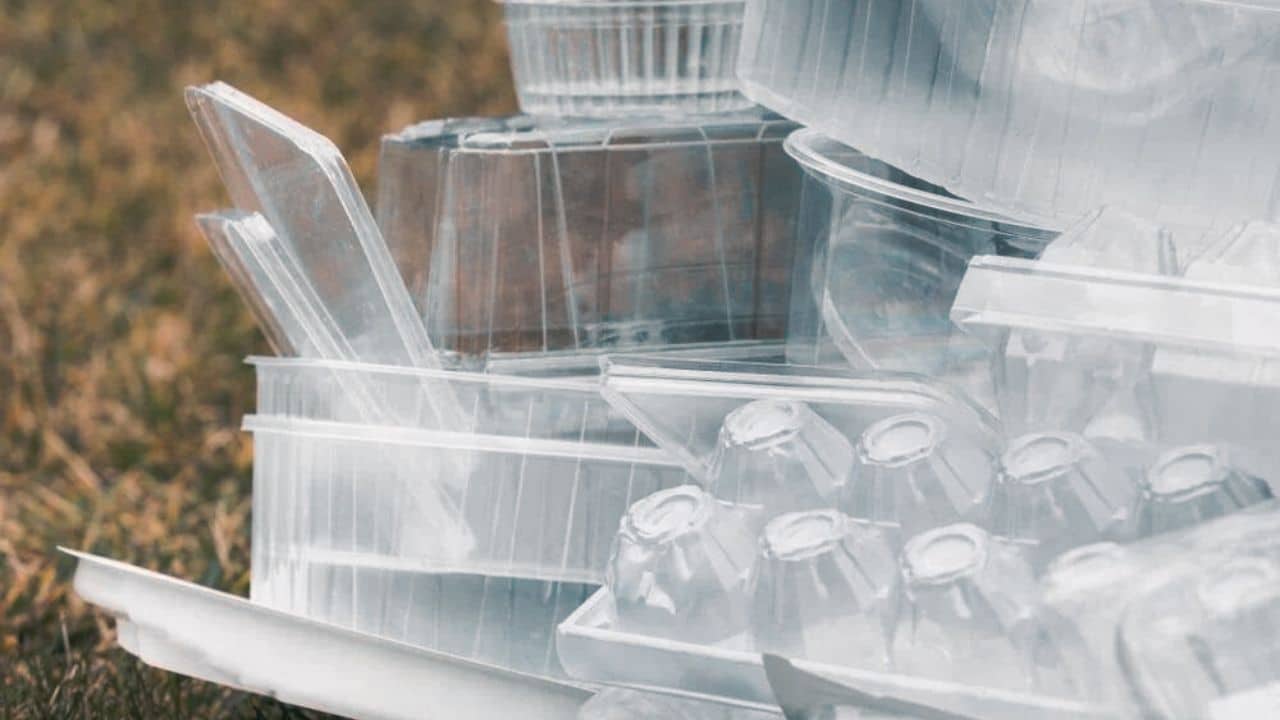Listen to Podcast:
Do you know how to clean fish? Cleaning fish is an essential skill for any angler, but it can be intimidating for beginners. However, with the right tools and a little bit of practice, you can clean your catch like a pro.
To start, you’ll need a sharp filet knife, a cutting board, and a clean work surface. It’s important to make sure your tools are clean and in good condition before you start. Once you have your tools ready, it’s time to get to work.
In this article, we’ll guide you through the step-by-step process of how to clean fish. We’ll cover everything from removing the scales to fileting the fish, and we’ll even share some tips from expert anglers to help you improve your technique. So, whether you’re a seasoned angler or a beginner, read on to learn how to clean fish like a pro.
Why Cleaning Fish is Important?
Cleaning fish is an essential step in the cooking process that helps to remove dirt, bacteria, and unwanted parts of the fish such as scales, bones, and guts. By cleaning fish properly, you can ensure that the fish is safe to eat and that it tastes good. In addition, cleaning fish can help to enhance the flavor of the fish by removing any impurities that might affect its taste. Properly cleaned fish can also be easier to cook and can result in a more visually appealing dish.
When fish is caught, it’s usually covered in scales, slime, and bacteria that can be harmful to human health. Therefore, it’s essential to clean fish properly to ensure that it’s safe to eat. Additionally, certain parts of the fish, such as the guts and bones, can cause an unpleasant taste and texture if not removed before cooking.
By removing the scales, the flesh of the fish is exposed, allowing it to absorb more flavor from marinades, seasonings, or sauces. Similarly, removing the skin can give the fish a more delicate and less rubbery texture when cooked.
Furthermore, cleaning fish can make the cooking process easier and more enjoyable. When the fish is properly cleaned, there’s less risk of small bones getting stuck in your throat, which can be painful and potentially dangerous. Additionally, visually appealing fish dishes are more appetizing and can be more enjoyable to eat.
In summary, cleaning fish is a crucial step in the cooking process that ensures food safety, enhances the taste and texture of the fish, and makes it easier and more enjoyable to cook and eat.
Read More: How to Clean Chicken
How to Clean Fish: Fish Cleaning Tools
Cleaning fish requires some essential tools that can help make the process easier and more efficient. Some of the necessary tools include:
Cutting Board: A sturdy and durable cutting board is essential for cleaning fish. It provides a stable surface for cutting and reduces the risk of injury.
Fillet Knife: A fillet knife is a thin, flexible knife that allows you to make precise cuts and remove the flesh of the fish from the bones. A sharp fillet knife is critical for successful fish cleaning.
Scissors: Scissors are useful for trimming fins, cutting through the spine, and removing the gills of the fish.
Pliers: Pliers can help you remove tough scales from the skin of the fish. They are also useful for removing small bones.
Tweezers: Tweezers are ideal for removing small bones from the flesh of the fish.
Fish Scaler: A fish scaler is a tool that helps to remove scales from the skin of the fish.
Gutting Knife: A gutting knife is used for cutting open the belly of the fish and removing its guts.
Bowl: A bowl of water is useful for rinsing the fish and washing away any dirt or debris.
Paper Towels: Paper towels are necessary for drying the fish after rinsing it.
Read Also: Fish Oil Supplements for Rheumatoid Arthritis
A Step-by-Step Guide on How to Clean Fish
Welcome to the Step by Step Guide on How to Clean Fish. This guide will provide you with all the information you need to clean and prepare your catch for cooking.
Before we start, it’s important to remember that fish are slippery and knives are sharp – be sure to handle both with care.
1. Preparation
Before you start cleaning your fish, it’s important to make sure you have all the necessary tools and supplies. You’ll need a knife, a cutting board, a descaling tool, and a container to hold the fish while you work. Additionally, you may want to have lemon, vinegar, and salt on hand to help season and clean the fish. Once you have all these items gathered, you can begin preparing your fish.
Hold the tail of the fish with your non-dominant hand and make sure it is fully dead. Depending on the size of the fish, use either a descaling tool or a butter knife to begin scraping off scales from its body. Doing so will help remove any slime or dirt that has accumulated on the fish’s skin. You should also rinse off any residual scales with cold water.
Next, you’ll need to separate the spine from the fillet. This can be done by cutting away the gill from the jaw of the fish in order to bleed it out. Once you’ve done this, rub it against its sides and rinse it off to remove any leftover particles.
Finally, if desired, season your fish with lemon juice, vinegar, or salt as desired for extra flavor and cleaning power. Now that you’ve prepared your fish for cleaning and cooking, you’re ready to move on to gutting and filleting!
2. Removing the scales
Removing the scales from a fish is an important step in the cleaning process. There are several methods for this, including using a spoon, a sharp knife, or a fish scaler.
To use a spoon, hold the fish firmly on a cutting board with one hand. With your other hand, scrape away the scales from the head to the tail using a spoon. Make sure to scrape in one direction only.
Using a sharp knife is another method for removing scales. Hold the fish firmly on the cutting board and use the knife to scrape away the scales in one direction. It is important to be careful when using a knife, as it can easily cut through skin and flesh.
Using a fish scaler is arguably the best and quickest way to remove scales from a fish. Simply hold the scaler firmly against one side of the fish and scrape it along its body in one direction until all of the scales have been removed.
After you have removed all of the scales from your fish, it is important to ensure that all of them have been removed from its body, fins, and tail. Use your fingers or a paper towel to check for any remaining scales and remove them if necessary.
Read More: How to Clean Strawberries
3. Gutting the fish
Gutting the fish is a necessary step in cleaning and preparing it for consumption. To begin, you should use a sharp fillet knife to cut into the vent located on the underside of the fish. Make sure to slice only away from your body and the fish’s organs. Next, you should use your fingers or the knife to gently pull out the gut area and discard it. Once complete, you can rub against the sides of the fish with your hands or a soft cloth to remove anything left over. Finally, you can use a lemon, vinegar, or salt solution to thoroughly clean the fish before filleting it. With these steps in mind, you can successfully gut a fish and prepare it for consumption!
4. Cutting off the head and tail
Once you have removed the scales and gutted your fish, it is time to cut off its head and tail. To do this, you will need a sharp filleting knife. Start by inserting the tip of the knife into the fish’s vent, located on the belly near the tail. Then, make a shallow cut from the vent to the base of the tail. Flip the fish over so that the head is now pointed toward your non-dominant hand. Make a shallow cut from behind the gills to the top of the head. Finally, carefully slice through both cuts until the head and tail are completely separated from the fillet. Be sure to use caution when cutting so as not to damage any of the other parts of your fish.
5. Cleaning the fish
Once you have prepared, removed the scales, gutted, and cut off the head and tail of your fish, it is time to move on to the cleaning stage. Start by rinsing the fish with cold water to remove any residue. You may also want to use a damp cloth or paper towel to help remove any dirt or debris from the surface of the fish.
Next, you can choose to clean your fish with either lemon juice, vinegar, or salt. If you are using lemon juice, fill a bowl with cold water and lemon juice in equal parts and submerge the fish in the mixture for 10 minutes. This will help to remove any lingering odors from the surface of the fish. Alternatively, if you are using vinegar or salt, mix cold water with either one and submerge your fish for 10 minutes as well.
Once you have finished cleaning your fish, rinse it off thoroughly with cold water to remove any excess liquid. Finally, pat dries your fish with a paper towel or clean cloth and it will be ready for cooking!
6. Filleting the fish
Filleting a fish is one of the most important steps in cleaning it, as it allows for easy cooking and preparation. To fillet a fish, you’ll need a sharp, flexible fillet knife and a cutting board or table.
Start by laying the fish flat on the cutting board with its spine facing you. Slide the knife into the fish, beginning at the head and slowly slicing towards the tail, keeping your knife parallel to the spine. When you reach the tail, turn the knife slightly to separate it from the fillet.
Continue slicing along the rib cage until you reach the other side of the fish. Then, turn your knife slightly and separate it from that side as well. Repeat this process until all of the fillets have been separated from each other.
When you are finished, rinse off any remaining scales or debris with cold water. Once all debris has been removed, your fish is ready to be cooked and enjoyed!
How to Clean Fish With Lemon?
Cleaning fish with lemon is a great way to remove odors and ensure that it is fresh. To do this, you will need some lemon juice, mustard oil, warm water, salt, and flour.
First, take your fish pieces and apply the lemon juice, mustard oil, warm water, salt, and flour mixture on them. Make sure to rub it in thoroughly. This will help to neutralize the amines that are left over from the fish.
Next, place the fish in a shallow dish and add enough milk blended with a tablespoon or two of fresh lemon water to cover it. Let it soak for 15 to 20 minutes; this will help to remove any remaining odors from the fish.
Afterward, take out the fish pieces and rinse off any excess milk or lemon juice with clean water. Your fish should now be free of any odors and ready for cooking!
Cleaning fish with lemon is an easy way to make sure your fish is fresh and free of any unpleasant odors. With this step-by-step guide, you can make sure your seafood dish is as delicious as it can be!
How to Clean Fish Fillet?
Once your fish is prepared, it’s time to fillet it. Start by cutting the head and tail off, then use a sharp fillet knife to make a shallow cut behind the gills and down the back of the fish. Work your knife along the backbone, using steady pressure to remove the fillet. Turn the fish over and repeat on the other side.
For optimal results, you should hold the fish firmly with one hand and use gentle strokes with the knife. Once you’ve separated both fillets, you can use a spoon or your thumb to remove any bones left behind. Finally, trim off any excess fat or skin and set it aside for later use.
Your fillets are now ready for cooking or freezing. To freeze them, wrap each one individually in plastic wrap before placing them in an airtight container or freezer bag.
How to Clean Fish With Vinegar?
Using vinegar to clean fish is an effective and simple way to ensure your seafood is fresh and hygienic. As a mild acetic acid solution, vinegar can be used to remove scales, gut, and fillet the fish, and even clean aquarium glass and glass tops. Here’s how to clean fish with vinegar:
- Preparation: Make sure you have all the necessary tools ready – a sharp knife, some warm water, and of course, vinegar.
- Removing the scales: Rub a little of the vinegar on the fish and leave it for about 5 minutes. This will make it easier to remove the scales with a spoon or knife.
- Gutting the fish: Cut off the head and tail of the fish before gutting it with a sharp knife. Again, you can use some vinegar to aid this process if needed.
- Cleaning the fish: Once you’ve gutted your fish, wash it with warm water and vinegar to help remove any remaining debris or odors.
- Filleting: Finally, spray your hands with some vinegar as you begin to fillet the fish to prevent them from picking up any odors from the fish.
Cleaning your fish with vinegar is an easy way to ensure freshness and hygiene when cooking seafood dishes at home. Plus, it can also be used to help clean aquarium glass and other surfaces around your tank too!
Read Also More: British Food Online
How to Clean Fish With Salt?
Cleaning fish with salt is a great way to add flavor and preserve your catch. You’ll want to mix 1/4 cup of salt with 1-1/2 to 2 gallons of water, depending on the size of your catch. When the mixture is ready, place your fish into the saltwater and allow them to soak for 30 minutes. After this, you can remove your fish and rinse them in clean water.
Now that your fish are cleaned, you can prepare them for eating or storage. Depending on what you plan to do with your fish, this could involve gutting it, removing the scales, cutting off the head and tail, or filleting it. For more detailed instructions on each of these steps, please refer to the other sections in this blog.
Finally, for an extra delicious flavor and crisp texture, consider adding some lemon juice to your saltwater solution before soaking your fish. The acidity from the lemon juice will help draw out more of the salt from the fish and preserve its flavor even more. Enjoy!
Daily Hacks: How to Reduce Fish Smell When Cooking?
Fish is a delicious and healthy source of protein, but one common problem that many people encounter is the strong odor that comes with it. Here are some tips on how to reduce fish smell:
Rinse the fish: Rinse the fish thoroughly with cold water to remove any loose scales, blood, or other debris. This will also help to wash away some of the fishy odor.
Soak the fish in milk: Soaking the fish in milk for an hour or two before cooking can help to reduce the fishy smell. The enzymes in the milk break down the compounds that cause the odor, making the fish less pungent.
Add lemon or vinegar: Adding lemon or vinegar to the fish while cooking can help to reduce the fishy smell. The acid in the lemon or vinegar neutralizes the odor, making the fish less pungent.
Use fresh fish: Fresh fish tends to have a milder scent than fish that has been frozen or stored for a long time. If possible, buy fresh fish for cooking to reduce the odor.
Use an air purifier: Using an air purifier in the kitchen can help to reduce the fishy smell. The purifier will remove the odor from the air, making it more pleasant to be in the kitchen.
Use proper ventilation: Using proper ventilation, such as opening windows or turning on the range hood, can help to reduce the fishy smell in the kitchen.
In summary, to reduce the fish smell, you can rinse the fish, soak it in milk, add lemon or vinegar, use fresh fish, use an air purifier, and use proper ventilation. These tips can help to make cooking fish more enjoyable and less pungent.
Read Also More: Muscle-Building Foods
How to Clean Fish: Final Words
In conclusion, cleaning fish is an essential skill for any seafood lover or angler. It is an important step in preparing fresh fish for cooking, and it ensures that your meal is safe to eat. Cleaning fish can seem intimidating at first, but with the right tools and techniques, anyone can do it like a pro.
The first step in cleaning fish is to gather the necessary equipment, including a sharp fillet knife, a cutting board, and a pair of pliers. Once you have these tools, you can start the cleaning process by removing the scales, cutting off the head, and gutting the fish. It’s important to work carefully and methodically to avoid any accidents and ensure that you get all the edible parts of the fish.
When cleaning fish, it’s also important to be mindful of food safety. Make sure to clean all the surfaces and tools you use, and wash your hands thoroughly before and after handling the fish. It’s also a good idea to cook the fish as soon as possible after cleaning it to ensure it stays fresh.
In summary, cleaning fish is a straightforward process that anyone can learn with a little practice. It’s an essential skill for any seafood lover or angler, and it’s important to approach it with care and attention to detail. By following the steps outlined in this guide and practicing good food safety, you can clean fish like a pro and enjoy delicious, fresh seafood at home. Apart from how to clean fish? you can read more entertainment articles here.
Frequently Asked Questions (FAQs) about How to Clean Fish
We have put together some of the commonly asked questions on how to clean fish like a pro. Check the questions for your queries.
What kind of vinegar is best for cleaning fish?
When it comes to cleaning your fish tank, white vinegar is the most recommended and accessible choice. Its 5% acidity level is lower than that of regular vinegar, making it safe for both fish and aquarium inhabitants. It’s important to dilute the vinegar with water before using it; a 5% solution of 1 part vinegar to 19 parts water usually works best. While some people are hesitant to resort to bleach, it is safe if used correctly; however, vinegar is still the preferred choice for tank cleaning. Additionally, it can be used in combination with other cleaning tools such as algae scrapers and clean sponges or cloths. With these supplies and the right concentration of white vinegar, you can ensure a clean and healthy tank for your fish.
Can I use dish soap to clean fish?
No, you should never use dish soap to clean fish. Even trace amounts of soap left in a fish tank can be deadly for fish, and the strong detergents and additives in dish soap could be toxic or dangerous. Besides that, cleaning out the tank can kill the established beneficial bacteria, leaving your fish to live in an environment of high ammonia. If the algae won’t come off by scrubbing, bring a pot of warm water to a boil and carefully pour it over the fouled area. For any other cleaning needs, always be sure to rinse the tank with warm water, wiping it out with a paper towel if necessary. Never use soaps or detergents of any kind; they’re very harmful to fish and their environment.
Should I rinse the fish with warm or cold water?
It is important to rinse fish with cold water for several reasons. Cold water will keep the fish’s texture intact and prevent it from becoming mushy. It will also help to remove any blood, bacteria, or digestive enzymes that may still be present in the fish. Additionally, cold water will help reduce the smell when cooking frozen or dried fish. You should avoid using warm or hot water as this can cause the fish to cook prematurely or change its texture. Vinegar is often used to clean fish as well, however, it is important to use mild vinegar to avoid overpowering the flavor of the fish. Lastly, you should always take extra care when removing any bones from the fish as they can be difficult to locate and can cause choking if not properly removed.
How do I know if I’ve removed all the bones from the fish?
Once you’ve removed the scales, the next step is to examine the fillet for bones. You can do this by feeling along the thickest part of the fillet with your fingers. If you can feel any bones, use a pair of tweezers or fishbone pliers to gently remove them. Be careful not to break or tear the fillet while doing so. You may also find it helpful to use a small flashlight to get a better view of what you’re working with. After removing all of the bones, you can now move on to cooking and serving your delicious fish!
How to reduce fish smell when cooking?
When it comes to reducing fish smell when cooking, there are several methods you can use. To start, try poaching, steaming, and braising as they will produce fewer odors. Additionally, you can soak the fish or the shellfish meat in milk for 20 minutes and then drain and pat dry to eliminate the smell. Another way to reduce odors is to keep a box of baking soda, activated charcoal, or another odor-absorbing agent in your kitchen. Finally, you can try placing a bowl of white vinegar in your kitchen overnight to get rid of any remaining smells. With these tips, you can easily enjoy your favorite dishes without offending anyone’s nose!
How to cook dried fish without smell?
Cooking dried fish without smell is a great way to enjoy this delicious seafood. First, you’ll want to scale the fish. This can be done by using a knife, but using a fish scaler would be more efficient. After scaling, submerge the fish in water for 30 minutes so the meat stays tender. Fill a large bowl with enough clean water from your sink to completely cover the fish. Two quick tricks for making that fillet smell and taste better are adding citrus juices or vinegar to the cooking liquid and rubbing steaks with salt before cooking.
Once you’re ready to cook, make a pouch with parchment paper and put the fish, vegetables of your choice, and a little olive oil, salt, and pepper inside. Poke a few holes in the pouch so the steam can escape and cook it until it’s done. Enjoy your dried fish without any unwanted smells!
How to cook frozen fish without smell?
You can cook frozen fish without any smell by making sure it is completely thawed before cooking. Make sure to thaw in the refrigerator overnight and not on the counter. You can then rinse the fish with cold water to remove any residue. If you still detect a fishy smell when cooking, try adding citrus or vinegar to the cooking liquid to help reduce any odors. Additionally, you can soak the fish in milk for 20 minutes before cooking as this will help reduce the fishy smell. Finally, remember to air out your kitchen after you are done cooking to help eliminate any lingering smells.








































